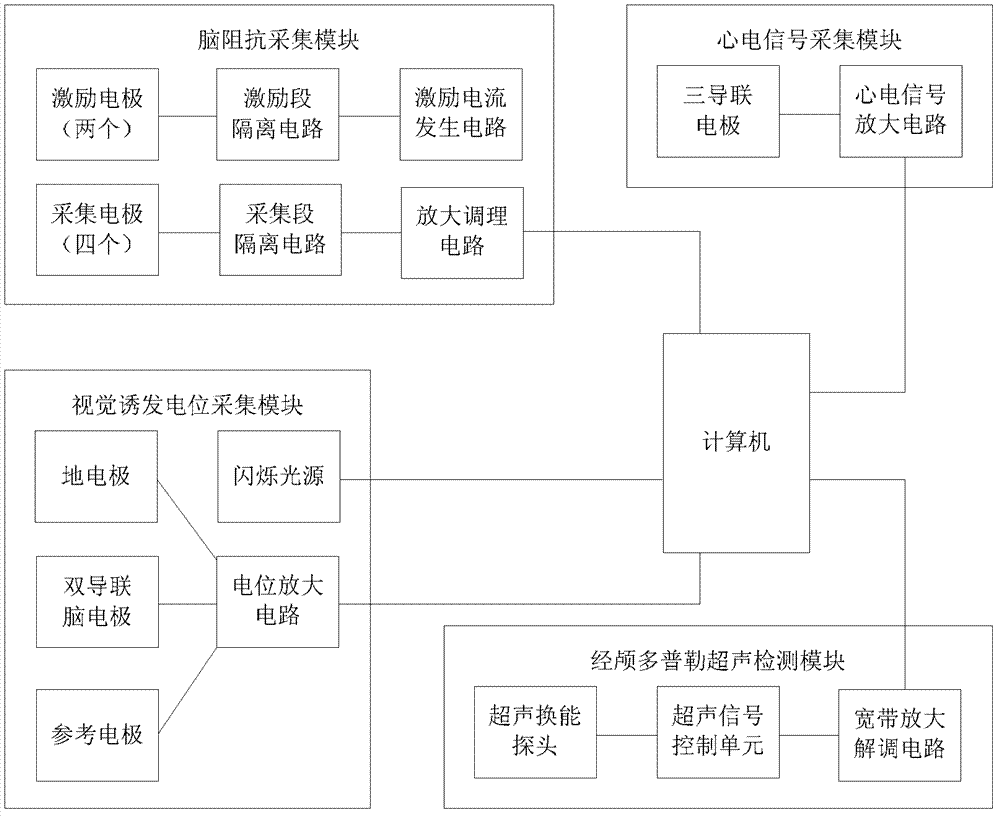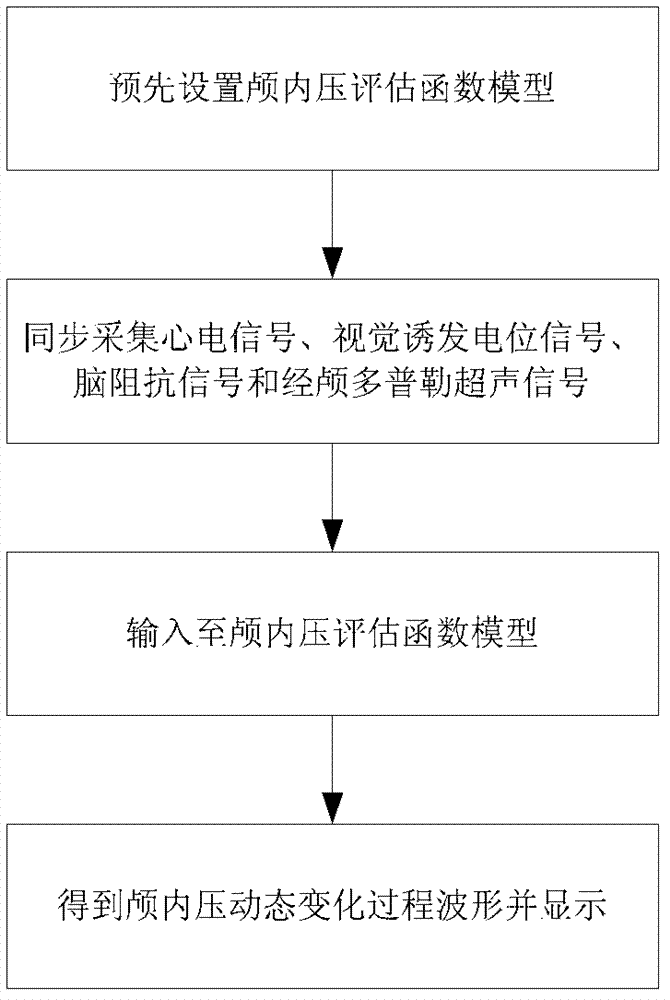Multi-parameter-based intracranial pressure noninvasive detection method and device
A technology for detecting intracranial pressure, which is applied in the fields of biomedical engineering technology and information processing, can solve problems such as weak robustness, simple signal processing methods, and difficult intracranial pressure, and achieve the goal of improving comprehensiveness and rationality Effect
- Summary
- Abstract
- Description
- Claims
- Application Information
AI Technical Summary
Problems solved by technology
Method used
Image
Examples
Embodiment Construction
[0038] The technical solution of the present invention will be further described below in conjunction with the drawings and embodiments:
[0039] Such as figure 1 As shown, the device for realizing the multi-parameter-based intracranial pressure non-invasive detection method of the present invention is mainly composed of a computer and a variety of signal parameter acquisition modules connected to the computer for data communication. These signal parameter acquisition modules are used to achieve synchronization of different physiological and pathological signals. Acquisition; these signal parameter acquisition modules include an ECG signal acquisition module, a visual evoked potential acquisition module, a brain impedance acquisition module and a transcranial Doppler ultrasound detection module, each of which is connected to a computer for data communication, used to collect ECG signals, Visual evoked potential signals, brain impedance signals, and transcranial Doppler ultrasound...
PUM
 Login to View More
Login to View More Abstract
Description
Claims
Application Information
 Login to View More
Login to View More - R&D
- Intellectual Property
- Life Sciences
- Materials
- Tech Scout
- Unparalleled Data Quality
- Higher Quality Content
- 60% Fewer Hallucinations
Browse by: Latest US Patents, China's latest patents, Technical Efficacy Thesaurus, Application Domain, Technology Topic, Popular Technical Reports.
© 2025 PatSnap. All rights reserved.Legal|Privacy policy|Modern Slavery Act Transparency Statement|Sitemap|About US| Contact US: help@patsnap.com



